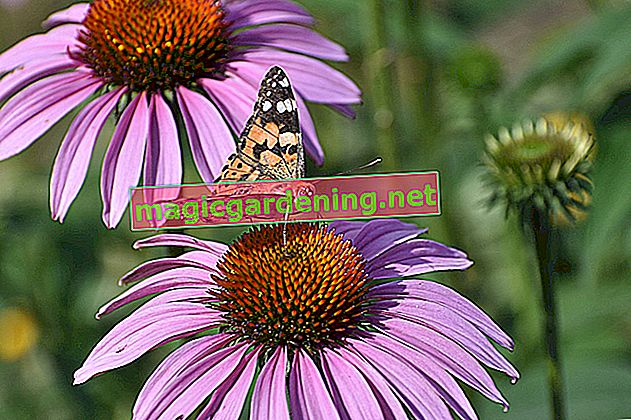
Which location does the single sheet prefer?
From its tropical home, the single leaf is used to high humidity with consistently high temperatures all year round and a light to partially shaded, but not directly sunny location. The plant thrives under all the other tropical vegetation and therefore receives little solar radiation. Nevertheless, it needs a bright place - just not in direct sunlight, as its rays can damage the leaves. The room temperature should never drop below 13 ° C, constant temperatures above 18 ° C are better. Even dry air does not like the single leaf, which is why you should spray it with a nebulizer from time to time.
also read
- Einblatt loves a bright location - with restrictions
- Water the single leaf regularly
- Single leaf has brown leaves or leaf spots, what to do?
In which substrate does the single sheet feel particularly comfortable?
You should use loose, nutrient-rich potting soil as the substrate: A mixture of compost soil and sand is ideal, but you can also simply purchase commercially available soil for flowering plants. Ideally, the substrate is also slightly acidic with a pH value between 5 and 6.
How should one pour the single sheet?
The single leaf has a very high water requirement and should therefore be poured regularly and evenly. do the finger test before watering: Once the surface of the substrate has dried, it's time to water again. In winter, the single leaf needs a winter break lasting several weeks, during which the room temperature is noticeably lower and you also water and do not fertilize less. This phase is ended with vigorous watering and a start fertilization. Then the plant will sprout again and bloom.
When and how often should you fertilize the single leaf?
Since the single leaf also has a very high nutritional requirement, you should provide it with a (liquid) complete fertilizer about every two weeks. In contrast to fertilizing other plants, fertilizing should only take place after watering, so that the single leaf, which is sensitive to salts, is not overwhelmed by the sudden flooding with salty fertilizers.
How often should you repot the single leaf and what is the ideal pot size?
Until the single leaf has reached its maximum size, you should repot it about once a year - if possible always after the “winter break” in spring. The largest possible pot has a diameter of around 20 centimeters, even the largest single leaf does not need more. When repotting, make sure you have a good drainage layer made of potsherds or expanded clay, (€ 17.50 at Amazon *) because even this moisture-loving plant doesn't like too wet feet.
Can I multiply the leaf myself?
The single leaf can be multiplied quite easily by dividing it. This measure is best carried out together with the annual repotting in spring. Carefully take the plant out of its container, remove excess soil from the root ball and then carefully divide the existing rhizomes, leaving at least one shoot (better more) on each section. The individual pieces are planted normally in separate pots.
Do you have to cut the single sheet?
Cutting back is neither useful nor necessary.
What pests and diseases can occur with the single leaf?
Due to the frequent watering and the constantly moist root ball, you should check the potting soil more often for mold. If this is the case, the substrate must be replaced. Pests such as spider mites or the red spider occur particularly when the room air is too dry. Therefore, regular spraying of the plant helps to prevent the annoying animals from appearing in the first place.
What to do with brown leaf tips
If the single leaf develops brown leaf tips, this is also an indication that the air is too dry. If, on the other hand, the leaves have spots or spots, you have over-fertilized the plant. Repot the affected specimen with fresh substrate in a new pot and use less fertilizer in the future.
Why is it if the leaf does not bloom?
If the single leaf does not bloom and / or has brown flowers instead, this is often due to a lack of light. Although the plants thrive quite well in shady rooms, they do not develop flowers. In this case, move the plant to a lighter spot.
What else should you pay attention to when maintaining the single sheet?
During the summer months, the plant also feels comfortable in a bright spot on the balcony or the like, as long as the temperatures do not drop below 18 ° C and it is not exposed to direct sunlight.
Tips
The single sheet is so popular not only because of its uncomplicated care, but also because of its air-purifying properties. The plant removes toxic substances from the room air and instead enriches the air with oxygen.








